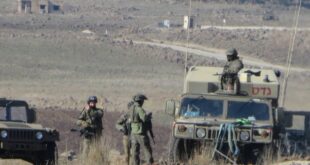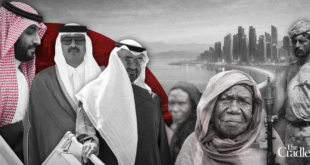Lebanon’s municipal election results are the first indication that Hezbollah continues to wield influence over its supporters despite the recent war with Israel
Lebanon’s municipal elections, which concluded on 24 May, were considered by observers as an important test for Hezbollah’s popularity following the recent war with Israel.
The devastation caused by the conflict, which spanned from October 2023 until the ceasefire agreement in late November 2024, as well as the delayed reconstruction process, are factors that have impacted the group’s popularity.
Moreover, the fall of the Assad regime in Syria in December 2024 and the Lebanese government’s heightened scrutiny at the Lebanese-Syrian border have also affected the group financially, as Hezbollah had been receiving funds and weapons from Iran through Syria for years.
Considering these elements, Hezbollah had invested a lot of importance in local elections to show domestic players in Lebanon, as well as foreign countries, that it still dominates its popular base despite the challenges it faces.
Before this month’s vote, the last municipal elections were held in 2016, having been postponed three consecutive times since 2022 due to logistical, security, or financial reasons.
Although municipal elections are not widely seen as an accurate reflection of popular sentiment due to low voter turnout and the distinct nature of local political dynamics, at least compared to the national level, they still give some indication of the influence of political parties on local populations.
Uncontested councils
Hezbollah and the Amal Movement managed to win a large number of municipalities in Bekaa and Southern Lebanon through convincing people and potential contestants not to participate in the elections or to withdraw their candidacies, meaning the council was uncontested.
In the villages where the elections took place – rather than decided by acclamation – the Hezbollah-Amal lists won a majority of seats in Shia villages, albeit with exceptions in some Southern Lebanon municipalities.
While the acclamation strategy was initially presented as a way to limit risks to voters amid the tense security situation in Southern Lebanon, both parties may have sought to demonstrate that they are uncontested in their areas of control.
Despite the ceasefire agreement, Israel continues to bombard Southern Lebanon almost daily and still occupies five areas within Lebanese territories.
Commenting on the possible reasons for Hezbollah’s insistence on winning by acclamation, Joseph Helou, Assistant Professor of Political Science at the Lebanese American University, explained that Hezbollah and Amal do not want to show division within the Shia community, especially at this critical time.
The group is currently subjected to unprecedented pressure as the international community, particularly the United States, is calling to disarm the group as soon as possible. President Joseph Aoun and the Lebanese government, headed by Prime Minister Nawaf Salam, have repeatedly called for a state monopoly on arms.
“Division can lead to fragmentation, and fragmentation can lead to unnecessary complications for them at this point in time,” Helou told The New Arab, adding that Hezbollah is currently in a state of confusion, contemplation, and reflection as the group evaluates its future role in Lebanon.
Low turnout rates
Voter turnout decreased in almost all areas in 2025 compared to 2016. In Southern Lebanon, it stood at 37% this year compared to 48% in 2016. In Bekaa, it decreased from 49% in 2016 to 45% in 2025, while in Mount Lebanon, it declined from 39% to 31%.
Northern Lebanon saw a decrease from 45% in 2016 to 39% in 2025, while in Beirut it increased marginally from 20% in 2016 to 21% in 2025.
While voter turnout, which was much lower than in 2016, could be a sign of decreased support for Hezbollah, the fact that many more municipalities won by acclamation – or were uncontested – is also an important factor.
Deputy Director for Research at the Carnegie Middle East Center think tank, Mohanad Hage Ali, said that low voter turnout in Hezbollah’s strongholds was not bad compared to Beirut or Tripoli, adding that the issue is more of a “nationwide problem”.
According to Mohammad Shamseddine, a researcher at the private firm Information International, apart from acclamation, the immigration of a large number of people from Lebanon since the 2016 elections could also explain the lower rates this year.
In recent years, amid the economic crisis, the 2020 Beirut port explosion, and the recent war, hundreds of thousands of Lebanese have left the country.
Meanwhile, Helou said that the impact of the war, especially for those whose houses or villages were destroyed, might have influenced voters, which could partially explain the drop in the number of voters in Baalbeck and Hermel, areas that suffered heavy destruction. However, this did not impact the results drastically, he added.
On the other hand, there are long-time Hezbollah supporters whose relatives were killed in the war, and for them, it’s an existential matter to vote for the group, as changing political arrangements could leave them voiceless in the future.
For years, Hezbollah and its allies dominated the ruling elite in Lebanon. However, the election of US-backed President Joseph Aoun and the formation of a new cabinet in January and February, respectively, have considerably decreased the party’s influence in the country.
Hezbollah’s motivations
Two days after the elections in South Lebanon, Hezbollah’s Secretary-General, Naim Qassem emphasised that “Hezbollah and Amal proved that they are a social safety valve and a pillar of national balance among the country’s components”.
Hage Ali told TNA that, through the elections, Hezbollah wanted to send a message that they could still mobilise people.
“To a certain extent, there have been concerted efforts on behalf of Hezbollah to basically send a message that they are capable enough to mobilise the population and that they are very popular now,” he told TNA.
Meanwhile, Helou believes that Hezbollah and Amal were motivated by the need to bridge any potential collision within the Shia community, taking into consideration that many villages are often divided by local family issues and not partisan membership in municipal elections.
In fact, for these two groups, “it’s an issue when local dynamics collide with national or partisan dynamics”, the Assistant Professor added.
Dialogue over arms
According to Hage Ali, by showing that the group is still popular, Hezbollah is making a dialogue between President Joseph Aoun and the group over the party’s weapons more urgent.
Lebanese authorities have so far avoided using force to disarm Hezbollah, as doing so would heighten the risk of internal strife.
Aoun said last month that the issue of Hezbollah’s weapons should be handled with calm and responsible dialogue, adding that the state will implement the monopoly on arms when the right conditions allow.
According to the researcher, showing that Hezbollah’s popularity is still intact helps in pushing the case for dialogue, “otherwise a civil war or strife is plausible”.
 Eurasia Press & News
Eurasia Press & News



